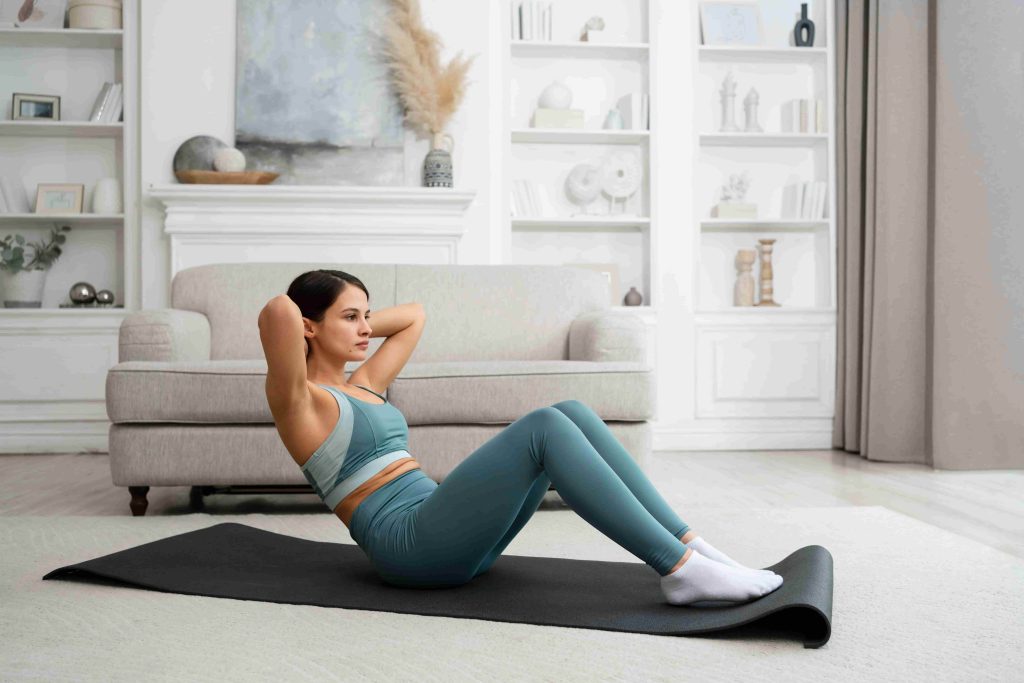19 de August de 2025
Sit-Ups: Exercise Guide, Tips and Benefits
Sit-ups are a classic bodyweight exercise used for decades to develop core strength and muscular endurance. While they’ve received criticism in recent years, sit-ups remain a foundational movement that can still play a role in a well-rounded strength and conditioning program when performed correctly.
In this guide, you’ll learn how to do sit-ups properly, what muscles they work, how to program them, and when it’s better to choose alternative exercises.

What Are Sit-Ups?
Sit-ups are a core exercise that involves lying on your back and curling your upper body towards your knees, engaging your abdominal muscles. Unlike crunches, sit-ups involve a greater range of motion and incorporate the hip flexors more significantly.
Traditionally used in military and school fitness testing, sit-ups are often associated with endurance more than maximal strength. Despite debates around their effectiveness and safety, sit-ups can still be useful in certain training contexts.
How to Do Sit-Ups Properly
- Start Position: Lie flat on your back, knees bent, feet flat on the floor. Cross your arms over your chest or place your hands behind your head without pulling on the neck.
- Engage Core: Brace your abs and press your lower back gently into the floor.
- Lift Torso: Use your core to curl your upper body up towards your knees. Avoid jerking or using momentum.
- Control Descent: Slowly lower yourself back down with control.
Tips for Proper Form
- Avoid pulling on your neck with your hands.
- Don’t anchor your feet if you want to minimize hip flexor dominance.
- Use a mat to protect your spine.
- Breathe out on the way up and in on the way down.
Muscles Worked by Sit-Ups
- Primary: Rectus abdominis (“six-pack” muscles)
- Secondary: Obliques, hip flexors (iliopsoas, rectus femoris), and transverse abdominis
Benefits of Sit-Ups
- Core endurance: Great for building muscular stamina in the abdominal area.
- Minimal equipment: Requires no equipment, ideal for home workouts.
- Versatility: Can be used in circuits, as part of warm-ups, or in bodyweight-focused routines.
- Assessment tool: Often used to test core endurance and functional fitness.
Common Mistakes to Avoid
- Using momentum: Swinging the arms or bouncing off the floor defeats the purpose.
- Feet anchoring overuse: While it makes the exercise easier, it increases hip flexor involvement.
- Neck strain: Pulling on the head instead of lifting from the core.
- Overtraining: High-rep sit-ups without rest can lead to fatigue and poor posture—learn about managing training fatigue.
Variations of Sit-Ups
- Weighted Sit-Ups: Hold a plate or dumbbell to add resistance.
- Decline Sit-Ups: Increases difficulty by placing the upper body below the hips.
- Butterfly Sit-Ups: Soles of feet together to reduce hip flexor engagement.
- V-Ups: A more advanced version targeting both upper and lower abs simultaneously.
- Sit-Up with Twist: Adds an oblique rotation to target side abs.

How to Include Sit-Ups in Your S&C Workout
- For beginners: 2-3 sets of 10-15 reps as part of a core circuit.
- For endurance goals: 3-4 sets of 20-30 reps with strict form.
- For athletes: Combine with planks and anti-rotation movements for a balanced core program.
- In circuits: Pair with push-ups, squats, or jumps for a full-body metabolic workout.
To understand how sit-ups fit into a broader training strategy, check out our guide on Strength and Conditioning.
FAQs About Sit-Ups
Do sit-ups reduce belly fat?
No. Spot reduction is a myth. Sit-ups strengthen abdominal muscles but won’t directly burn fat from the belly.
Will 100 situps a day give you abs?
Only if your body fat is low enough. Abs are revealed through a combination of diet, full-body strength training, and conditioning.
Why are sit-ups no longer recommended?
Some experts discourage sit-ups due to potential spinal stress and overuse of hip flexors. Safer core alternatives like planks or dead bugs are often preferred.
Are sit-ups good for anything?
Yes, especially for building endurance in the abdominal muscles and as a basic bodyweight movement. They can still be effective if done correctly.
How many sit-ups a day is okay?
It depends on your level and goals. For most, 3 sets of 10-25 reps, 2-3 times per week, is sufficient.
Are planks better than sit-ups?
Planks offer a safer, more comprehensive core challenge with less spinal strain. However, both have their place depending on the context.
What is better, sit-ups or crunches?
Crunches isolate the abs with less hip flexor involvement and lower spine movement. Sit-ups engage more muscles but come with higher injury risk if poorly executed.
